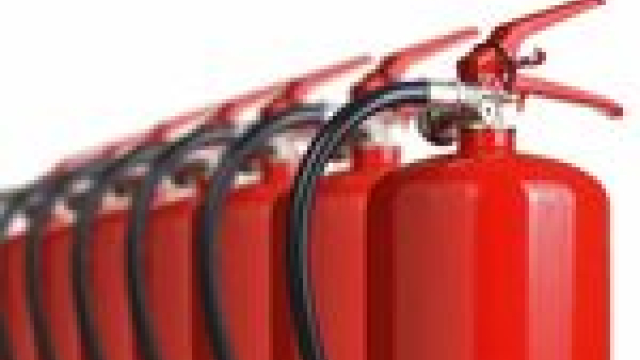Fire Extinguishers are a crucial tool in ensuring safety in both residential and commercial settings. Understanding how they work and when to use them can make a significant difference in preventing property damage and saving lives. In this comprehensive guide, we’ll break down everything you need to know about fire extinguishers in simple terms.
What is a Fire Extinguisher?
A fire extinguisher is a portable device designed to extinguish small fires by spraying a substance that either cools the burning material or removes oxygen, thus halting the combustion process.
Types of Fire Extinguishers
Fire extinguishers are classified based on the type of fires they can extinguish. The following are the most common types:
1. Water-Based Fire Extinguishers
Water-based extinguishers are effective against Class A fires, which involve materials like wood, paper, and cloth. They work by cooling the fire and reducing its temperature.
2. Foam Fire Extinguishers
Foam extinguishers are suitable for Class A and Class B fires, which involve flammable liquids like petrol, diesel, and oil. The foam creates a barrier, cutting off the fire’s oxygen supply.
3. Carbon Dioxide (CO2) Fire Extinguishers
CO2 extinguishers are ideal for electrical fires (Class C) and Class B fires involving flammable liquids. They work by displacing oxygen, effectively smothering the fire.
4. Dry Chemical Powder Fire Extinguishers
These versatile extinguishers are effective against Class A, B, and C fires. They contain a dry chemical powder that interrupts the chemical reaction of the fire.
5. Wet Chemical Fire Extinguishers
Wet chemical extinguishers are specifically designed for Class F fires, which involve cooking oils and fats. They work by creating a blanket-like layer that prevents reignition.
How to Use a Fire Extinguisher
Knowing how to properly use a fire extinguisher is essential for effective firefighting. Follow these simple steps:
1. Pull the Pin
Start by pulling the pin or breaking the tamper seal, which will allow you to discharge the extinguisher.
2. Aim at the Base of the Fire
Direct the nozzle or hose at the base of the fire, not the flames. This will ensure that you’re attacking the primary source of the fire.
3. Squeeze the Handle
Squeeze the handle to release the extinguishing agent. Maintain a firm grip and aim steadily.
4. Sweep from Side to Side
Using a sweeping motion, move the extinguisher from side to side until the fire is completely extinguished. Continue to monitor the area for any signs of reignition.
Where to Place Fire Extinguishers
Strategic placement of fire extinguishers can make a significant difference in emergency situations. Here are some key locations to consider:
1. Kitchen
Place a fire extinguisher in or near the kitchen, as cooking-related fires are common in residential settings.
2. Garage
Given the presence of flammable materials in garages, having a fire extinguisher readily available is crucial.
3. Near Exits
Install fire extinguishers near exits for quick access in the event of a fire blocking the primary escape route.
4. Workshop or Utility Room
These areas often contain tools and equipment that pose fire risks, making them ideal locations for fire extinguishers.
Importance of Regular Maintenance
Proper maintenance is essential to ensure that fire extinguishers are in working condition when needed. Here’s what you can do:
1. Inspect Regularly
Check fire extinguishers monthly for visible signs of damage or corrosion.
2. Ensure Accessibility
Ensure that fire extinguishers are easily accessible and not obstructed by furniture or other objects.
3. Schedule Professional Servicing
Schedule annual servicing by a qualified professional to ensure that extinguishers are functioning correctly.
4. Training and Education
Provide training to occupants on how to properly use fire extinguishers and when it’s safe to do so.
Additional Tips for Fire Safety
In addition to having fire extinguishers readily available, there are several other measures you can take to enhance fire safety:
1. Install Smoke Alarms
Smoke alarms are essential for early detection of fires. Install them on every level of your home and inside each bedroom. Test smoke alarms monthly and replace batteries annually.
2. Create an Escape Plan
Develop a fire escape plan with your family or colleagues and practice it regularly. Ensure everyone knows the primary and secondary escape routes and where to meet outside in the event of a fire.
3. Keep Flammable Items Secure
Store flammable materials such as gasoline, propane, and paint away from heat sources and in well-ventilated areas. Dispose of oily rags properly to prevent spontaneous combustion.
4. Use Caution with Electrical Appliances
Avoid overloading electrical outlets and ensure that cords are not frayed or damaged. Unplug appliances when not in use and replace any appliances with exposed wires or signs of malfunction.
Knowing When to Evacuate
While fire extinguishers can be effective for small, contained fires, there are instances when it’s safer to evacuate and call the fire department:
Understanding how they work and when to use them can make a significant difference in preventing property damage and saving lives. In this comprehensive guide, we’ll break down everything you need to know about fire extinguishers in simple terms.
1. Fire Spreading Rapidly
If the fire is spreading quickly or if smoke is filling the room rapidly, evacuate immediately. Closing doors behind you can help contain the fire’s spread.
2. Limited Extinguishing Agent
If the fire extinguisher is small, and the fire is large or spreading rapidly, it’s best to evacuate and let firefighters handle the situation with their professional equipment.
3. Uncertainty About Fire Type
If you’re unsure about the type of fire or if attempting to extinguish it could pose a risk, evacuate immediately. Different types of fires require specific extinguishing agents, and using the wrong one can worsen the situation.
Conclusion
Fire extinguishers are invaluable tools for fire safety, but their effectiveness relies on proper understanding and maintenance. By familiarizing yourself with the types of extinguishers available, knowing how to use them, and ensuring regular maintenance, you can enhance safety in your home or workplace. Remember, when it comes to fire safety, being prepared is key. Fire safety is a responsibility that falls on everyone’s shoulders. By being proactive, staying informed, and having the necessary tools and knowledge at your disposal, you can minimize the risk of fires and ensure the safety of yourself and those around you.
NOTE : For more insightful articles related to this topic, feel free to visit blogozilla



